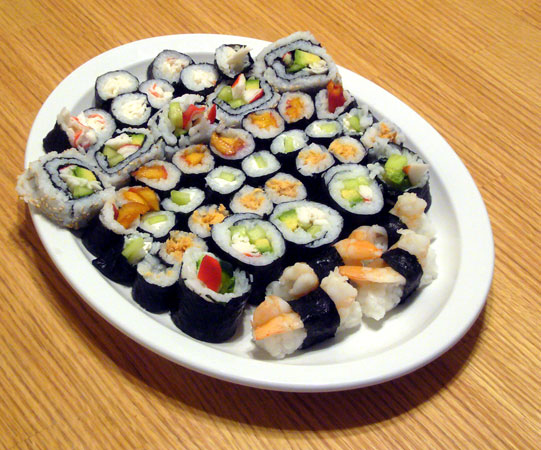Yesterday my projector was acting up in a very unfriendly way. There was something wrong with the lighting. It was uneven with a couple lines through it. Worse, when I moved the projector, the lines moved, and I could hear a part moving around inside. Eventually, percussive maintenance no longer affected any change in the image. My only real option was to take it apart. Projectors aren’t cheap, and they are built of complicated and sensitive parts, so I was reluctant to open it up. My first thought was a flaw in the light bulb. I took the bulb out and examined it, cleaned out some of the accumulated dust, and tried again. No luck. Then I removed the case to expose the inner workings. I couldn’t see any problems immediately, but I wasn’t exactly sure what I was looking for. Since it was approaching 2am, I decided to call it a night and worry about it the next day. Just in case, I ordered a new bulb, which will be delivered early next week. It turned out that the bulb was not the problem, but it’s too late to cancel the order, and it will be nice to have a backup bulb anyway.
Today I decided to give it another try. I dismantled it again, and this time turned it on while dismantled. It is incredible how much light comes through a tiny aperture. I could not look at it without some kind of protection. By following the light path, I was able to discover the problem.
The light goes through a very small square, perhaps half a centimeter wide. It enters this light tube composed of four small rectangular mirrors. The tube is about 3 centimeters long, and the four mirrors are attached along the long edges with some sort of glue. What had happened was that the heat from the lamp had weakened the glue, and one of the four sides of the square had dislodged. This led to the dimming because the mirror was no longer directing the light, and it explained the lines because the mirror was partially in the path of the light.
I was able to extract the square and, using scotch tape (bless the stuff), reconstruct the square tube and replace the fourth side. I am concerned that the scotch tape will melt or otherwise not hold, but if that happens I’ll look for a more formidable adhesive. I put everything back together, and my projector worked as well as it ever had.
It was a little intimidating working with an expensive piece of equipment whose mechanisms were mostly unfamiliar to me, but I’m glad that I was able to figure it out and fix it without damage.


